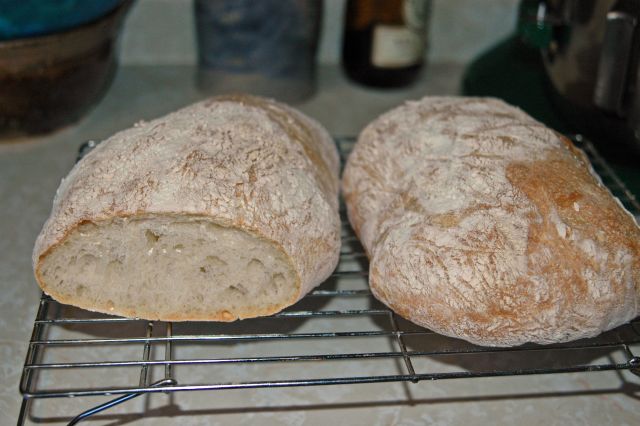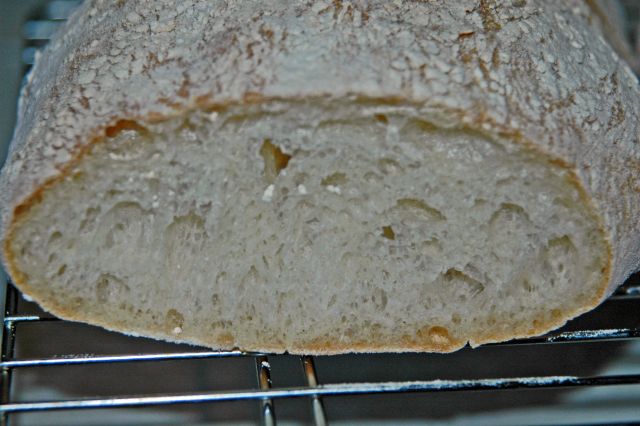Ciabatta and Pizza
Today I tried Jason's Quick Coccodrillo Ciabatta. It was quick and easy as stated. I did do the SD variation to use up some of my starter and found I did have to add another 1/2 cup of flour for it to come together even after 1/2 hour mixing.


With the leftover I did up a pizza dough for supper tonight.

- Log in or register to post comments
- 2 comments
- View post
- Nomadcruiser53's Blog


